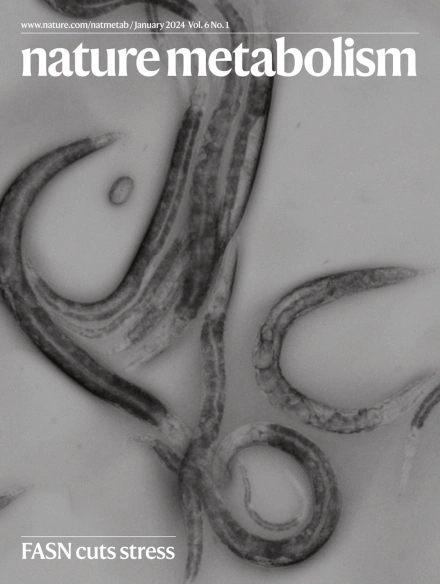GIPR agonism and antagonism decrease body weight and food intake via different mechanisms in male mice
IF 20.8
1区 医学
Q1 ENDOCRINOLOGY & METABOLISM
引用次数: 0
Abstract
Agonists and antagonists of the glucose-dependent insulinotropic polypeptide receptor (GIPR) enhance body weight loss induced by glucagon-like peptide-1 receptor (GLP-1R) agonism. However, while GIPR agonism decreases body weight and food intake in a GLP-1R-independent manner via GABAergic GIPR+ neurons, it remains unclear whether GIPR antagonism affects energy metabolism via a similar mechanism. Here we show that the body weight and food intake effects of GIPR antagonism are eliminated in mice with global loss of either Gipr or Glp-1r but are preserved in mice with loss of Gipr in either GABAergic neurons of the central nervous system or peripherin-expressing neurons of the peripheral nervous system. Single-nucleus RNA-sequencing shows opposing effects of GIPR agonism and antagonism in the dorsal vagal complex, with antagonism, but not agonism, closely resembling GLP-1R signalling. Additionally, GIPR antagonism and GLP-1R agonism both regulate genes implicated in synaptic plasticity. Collectively, we show that GIPR agonism and antagonism decrease body weight via different mechanisms, with GIPR antagonism, unlike agonism, depending on functional GLP-1R signalling. This study, together with a companion manuscript, show that, in mice, weight loss as a result of GIP receptor antagonism requires, and potentiates, functional GLP-1 receptor signalling in the brain, explaining how both GIP receptor agonists and antagonists trigger weight loss through different mechanisms.


GIPR激动剂和拮抗剂通过不同的机制降低雄性小鼠的体重和食物摄入量
葡萄糖依赖性胰岛素性多肽受体(GIPR)的激动剂和拮抗剂可增强胰高血糖素样肽-1受体(GLP-1R)激动作用诱导的体重减轻。然而,虽然GIPR拮抗剂通过gab能GIPR+神经元以glp - 1r不依赖的方式降低体重和食物摄入量,但尚不清楚GIPR拮抗剂是否通过类似的机制影响能量代谢。本研究表明,GIPR拮抗剂对体重和食物摄入的影响在GIPR或Glp-1r缺失的小鼠中被消除,但在中枢神经系统gaba能神经元或外周神经系统表达外周蛋白的神经元中GIPR缺失的小鼠中被保留。单核rna测序显示,在迷走背复合体中,GIPR的激动作用和拮抗作用相反,具有拮抗作用,但不具有激动作用,与GLP-1R信号传导非常相似。此外,GIPR拮抗剂和GLP-1R拮抗剂都调节与突触可塑性有关的基因。总的来说,我们发现GIPR激动作用和拮抗作用通过不同的机制降低体重,与激动作用不同,GIPR拮抗作用依赖于功能性GLP-1R信号传导。
本文章由计算机程序翻译,如有差异,请以英文原文为准。
求助全文
约1分钟内获得全文
求助全文
来源期刊

Nature metabolism
ENDOCRINOLOGY & METABOLISM-
CiteScore
27.50
自引率
2.40%
发文量
170
期刊介绍:
Nature Metabolism is a peer-reviewed scientific journal that covers a broad range of topics in metabolism research. It aims to advance the understanding of metabolic and homeostatic processes at a cellular and physiological level. The journal publishes research from various fields, including fundamental cell biology, basic biomedical and translational research, and integrative physiology. It focuses on how cellular metabolism affects cellular function, the physiology and homeostasis of organs and tissues, and the regulation of organismal energy homeostasis. It also investigates the molecular pathophysiology of metabolic diseases such as diabetes and obesity, as well as their treatment. Nature Metabolism follows the standards of other Nature-branded journals, with a dedicated team of professional editors, rigorous peer-review process, high standards of copy-editing and production, swift publication, and editorial independence. The journal has a high impact factor, has a certain influence in the international area, and is deeply concerned and cited by the majority of scholars.
 求助内容:
求助内容: 应助结果提醒方式:
应助结果提醒方式:


